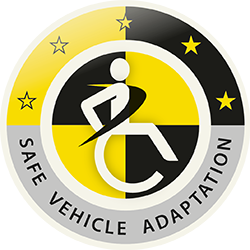 BraunAbility Safety Centre
BraunAbility Safety Centre
To remain in the front line among producers of safe and reliable vehicle adaptation products we have invested in in-house test facilities. Here our products must pass various tests before being released onto the market. Static pull tests, climate tests and cycle tests are examples of tests that we perform at our Safety Centre. Dynamic crash tests are performed by Q'Straint at the iQ Center in the UK.
For the tests we don’t perform in-house we team up with a number of accredited test houses for specific and general testing, these include:
RISE and TÜV offer testing as a technical service for several UN regulations.
TÜV and VCA offer witness tests, which means that the tests are performed in our laboratory under the supervision of the authority that issued the test report as a technical service.